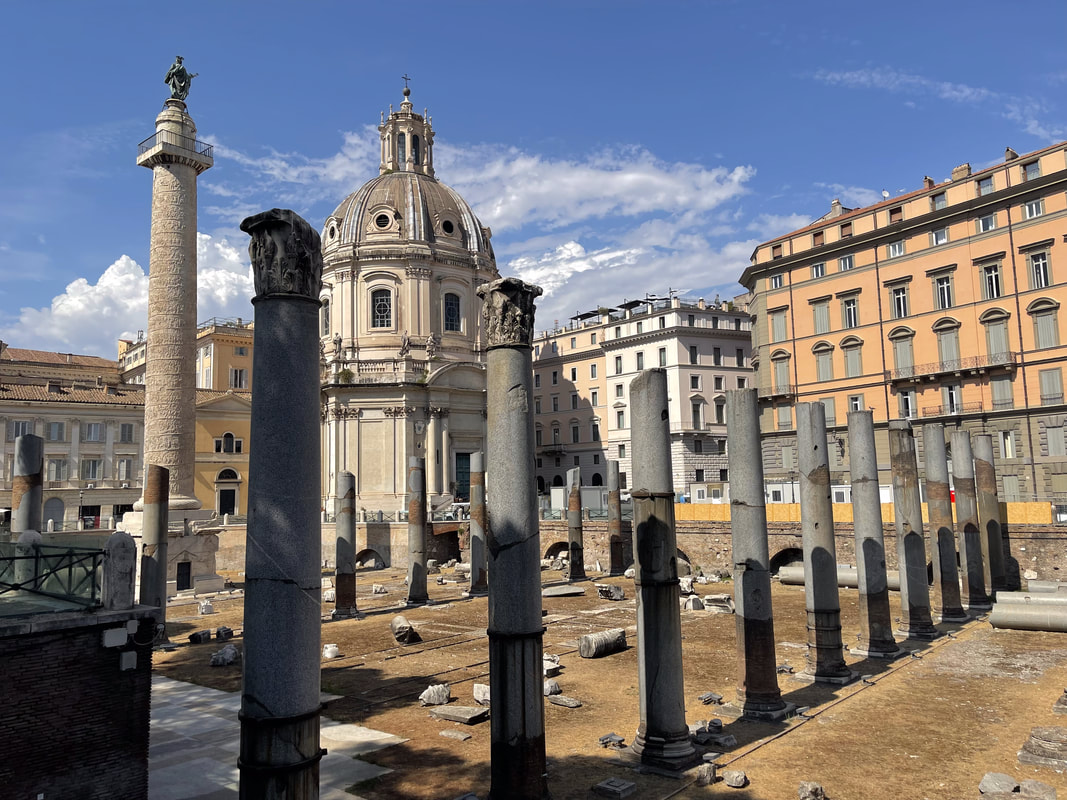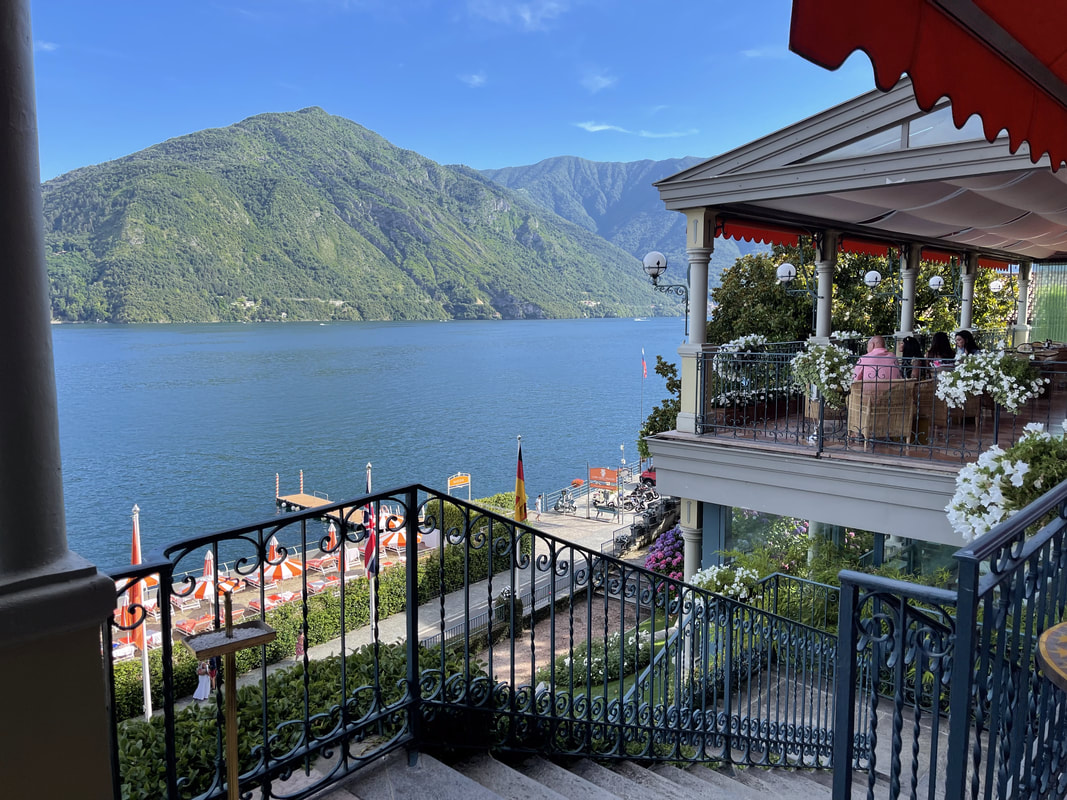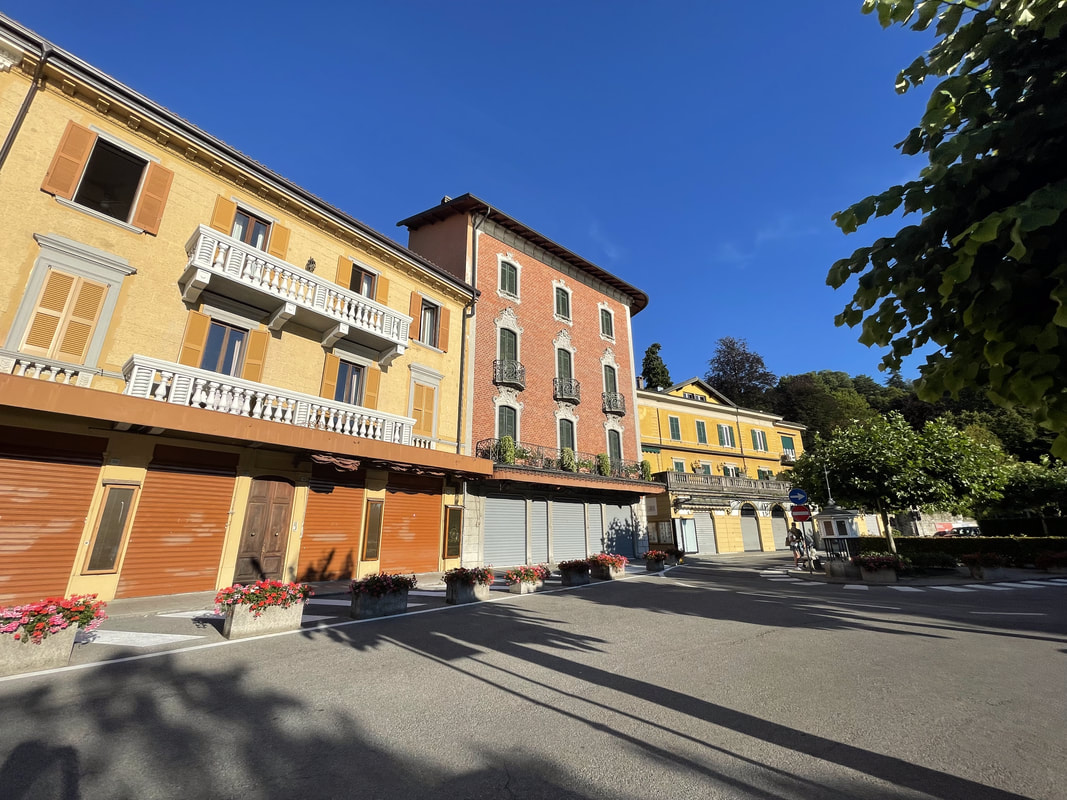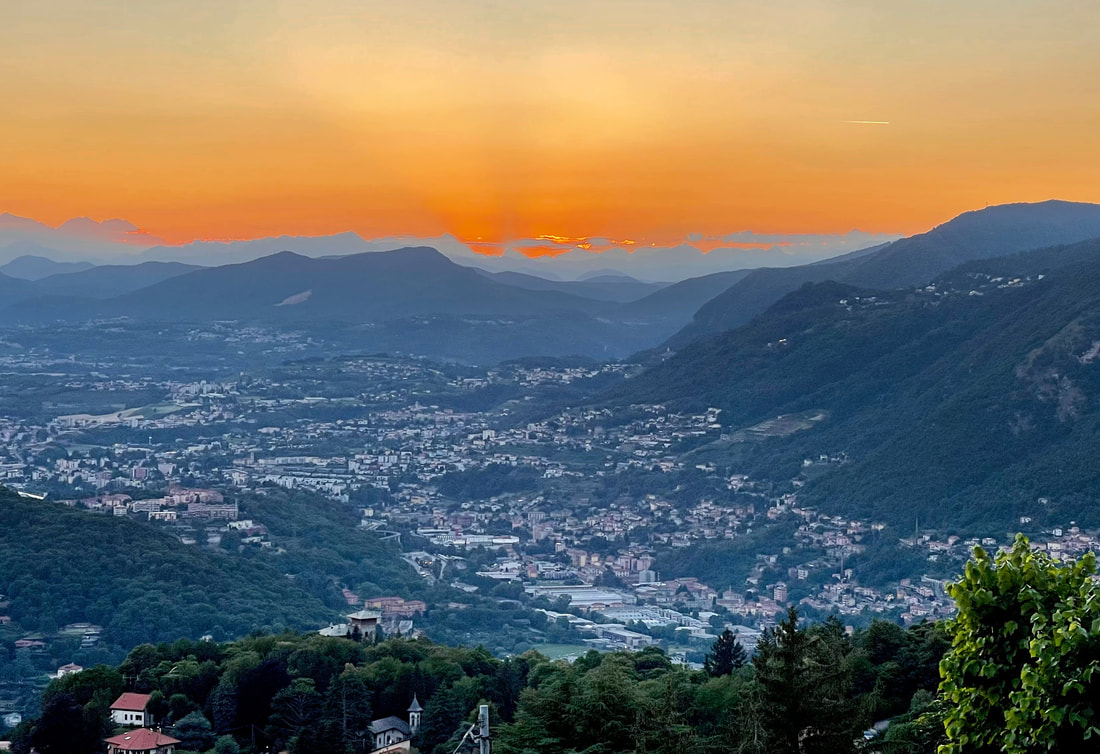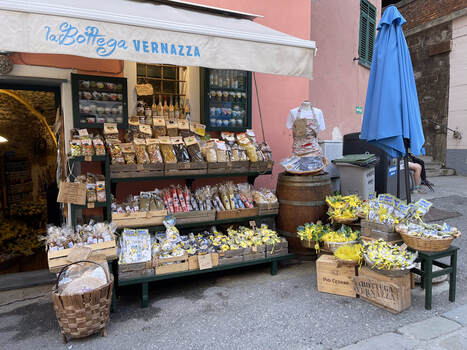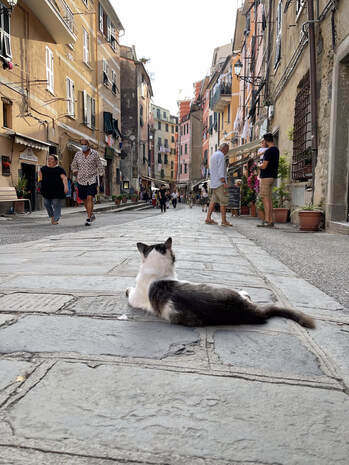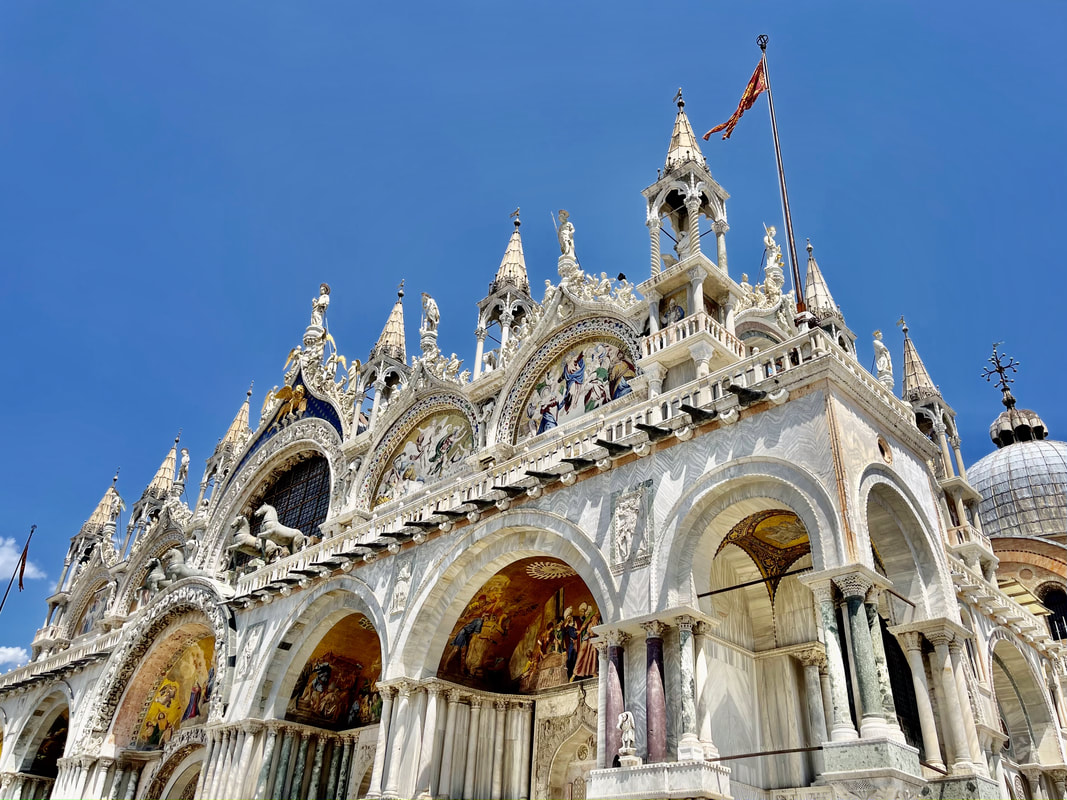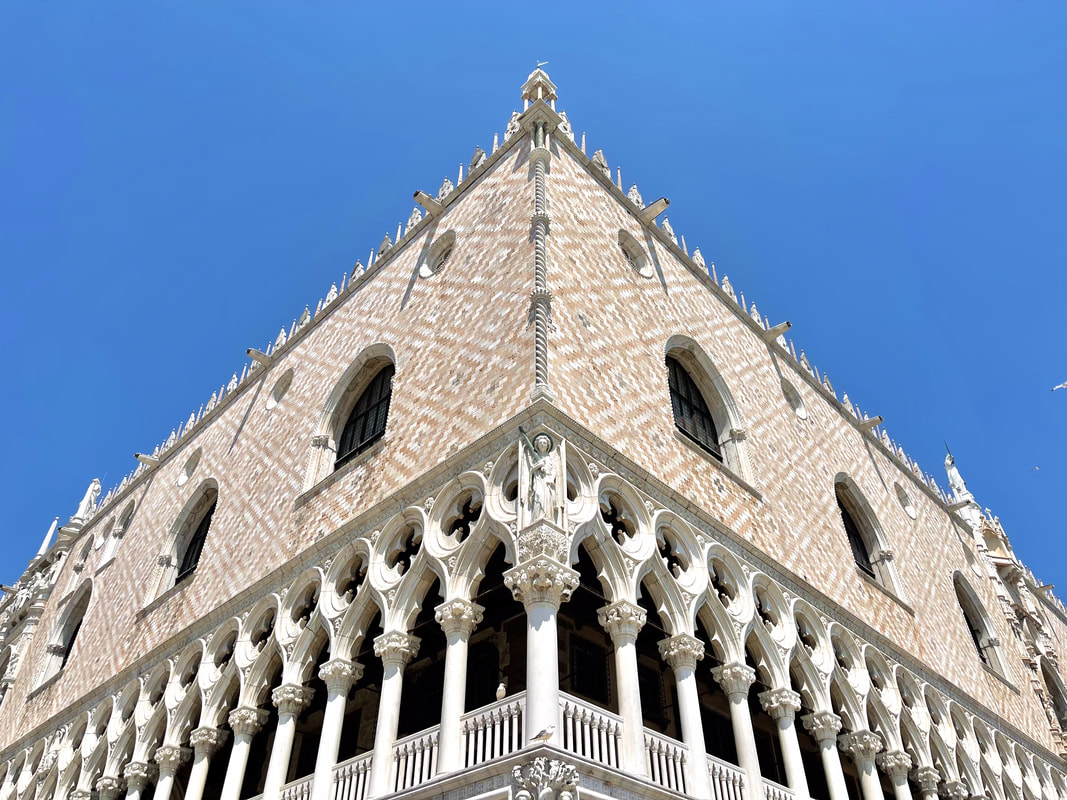Romance and Architecture
Please be sure to email us at [email protected] for exclusive deals to Italy, don't miss out on one destination you will never forget!
Italy cradle of art, fashion and renaissance, where you can discover exquisite architecture, beautiful landscapes and wonderful people.
Photos from Our Italy Experience!
Rome
The Colosseum
The Colosseum or Flavian Amphitheater, is an amphitheater from the time of the Roman Empire, built in the 1st century. It is located in the east of the Roman Forum, and was the largest that were built in the Roman Empire
The Colosseum constitutes part of the public entertainment of ancient Rome. Summed up everything that the city's rulers required to manage the mob and keep it entertained : gladiator games, naval battles and fights with animals.
Up to 50,000 spectators were able to participate in the bloody diversions with which the emperors courted the people.
The Colosseum constitutes part of the public entertainment of ancient Rome. Summed up everything that the city's rulers required to manage the mob and keep it entertained : gladiator games, naval battles and fights with animals.
Up to 50,000 spectators were able to participate in the bloody diversions with which the emperors courted the people.
The Trevi Fountain
The Trevi Fountain is one of the largest monumental Baroque fountains in Rome.
The Trevi Fountain is one of the most beautiful fountains in the world. Not only because of its size or its design, but also because of its energy. As soon as you get there it is able to flood you with it to the core.
Its birth was a long process since it was started "almost formally" in 1732, by the architect Nicola Salvi. From there and for 30 years, between stumbles, wars, lack of budget, fights and deaths, it was finally concluded in 1762.
Its design is in the Baroque style, where elements of architecture, sculpture and nature come together in the same setting.
Unfortunately, Salvi could not see his finished work since he died in 1751, so after going through several "hands" it was completed by the architect Giuseppe Pannini. A traditional legend holds that visitors who throw a coin into the fountain ensure their return to Rome. A current interpretation is that, in addition, two coins lead to a new romance and three ensure a marriage or divorce. Another version of this legend is that it brings luck to throw three coins with the right hand over the left shoulder into the fountain. It is unknown if there is reliable information that minimally supports such legends, as they could end up distorted and relegated by disappointment to oblivion. It is also said that if you throw two coins you find love and if you throw three coins you marry that love! Imagine that weekly you can raise up to $14,000!
️
The Trevi Fountain is one of the most beautiful fountains in the world. Not only because of its size or its design, but also because of its energy. As soon as you get there it is able to flood you with it to the core.
Its birth was a long process since it was started "almost formally" in 1732, by the architect Nicola Salvi. From there and for 30 years, between stumbles, wars, lack of budget, fights and deaths, it was finally concluded in 1762.
Its design is in the Baroque style, where elements of architecture, sculpture and nature come together in the same setting.
Unfortunately, Salvi could not see his finished work since he died in 1751, so after going through several "hands" it was completed by the architect Giuseppe Pannini. A traditional legend holds that visitors who throw a coin into the fountain ensure their return to Rome. A current interpretation is that, in addition, two coins lead to a new romance and three ensure a marriage or divorce. Another version of this legend is that it brings luck to throw three coins with the right hand over the left shoulder into the fountain. It is unknown if there is reliable information that minimally supports such legends, as they could end up distorted and relegated by disappointment to oblivion. It is also said that if you throw two coins you find love and if you throw three coins you marry that love! Imagine that weekly you can raise up to $14,000!
️
Piazza Navona
Navona Square (Piazza Navona in Italian) is one of the most outstanding urban spaces in Rome, which brings together sculptures, fountains and buildings of great artistic value and is a center of social, cultural and tourist life in the city. This space has been an important site since Ancient Rome.
Piazza Navona , is one of the most beautiful and charming squares in Rome. It occupies the site of the old stadium of Domitian, which could hold a capacity of up to 30,000 spectators. It was built by Gian Lorenzo Bernini in 1600 on the foundations of what was the Stadium of Domitian.
Piazza Navona continues to be a meeting place for Romans and tourists who sit down for dessert in the many outdoor cafes that surround it. They are not the cheapest in Rome, but it is an option to enjoy the square from any of its angles. The beautiful main fountain in Piazza Navona was made by Gian Lorenzo Bernini and dedicated to four rivers of the four continents known at that time: The Nile for Africa, the Danube for Europe, La Plata for America and the Ganges for Asia.
The other two fountains located in the Navona are the Neptune Fountain and the Moro Fountain, one was made by Giacomo della Porta and later completed with elements by Bernini. Currently in the square you can find every day street artists, painters and portraitists or cartoonists who in a few minutes manage to capture the most characteristic features of the model in a very fun way.
Piazza Navona , is one of the most beautiful and charming squares in Rome. It occupies the site of the old stadium of Domitian, which could hold a capacity of up to 30,000 spectators. It was built by Gian Lorenzo Bernini in 1600 on the foundations of what was the Stadium of Domitian.
Piazza Navona continues to be a meeting place for Romans and tourists who sit down for dessert in the many outdoor cafes that surround it. They are not the cheapest in Rome, but it is an option to enjoy the square from any of its angles. The beautiful main fountain in Piazza Navona was made by Gian Lorenzo Bernini and dedicated to four rivers of the four continents known at that time: The Nile for Africa, the Danube for Europe, La Plata for America and the Ganges for Asia.
The other two fountains located in the Navona are the Neptune Fountain and the Moro Fountain, one was made by Giacomo della Porta and later completed with elements by Bernini. Currently in the square you can find every day street artists, painters and portraitists or cartoonists who in a few minutes manage to capture the most characteristic features of the model in a very fun way.
The Pantheon of Agrippa
The Pantheon of Agrippa, also known as the Pantheon of Rome, is one of the architectural masterpieces present in the Italian capital as well as being the best preserved building in ancient Rome.
The construction of the Pantheon was carried out in Hadrian's time, in AD 126. It receives the name of Agrippa because it was built where previously, in the year 27 BC, the Pantheon of Agrippa was destroyed by a fire in the year 80 AD. During the early 7th century, the building was donated to Pope Boniface IV, who transformed it into a church, thus keeping it in perfect condition to this day.
The rectangular façade hides a huge dome with a diameter greater than that of St. Peter's Basilica. It is made up of 16 granite columns 14 meters high, on which the inscription "M.AGRIPPA.LFCOS.TERTIVM.FECIT" is read, which means "Marco Agrippa, son of Lucio, consul for the third time, built it ".
The Pantheon of Agrippa is the best preserved Roman building in the world, it is a perfect synthesis of harmony and constructive intelligence and no one dared to carry out a similar work until the Renaissance, fourteen centuries later. Michelangelo referred to the Pantheon as the building that had "an angelic and non-human design."
At present, this building still preserves its original marble pavement and in the interior chapels, where statues of the divinities were formerly, today there are chapels with numerous works of art. Since the Renaissance period, the Pantheon has been used as the seat of the Academy of the Virtuous of Rome, serving as a tomb for great Italians such as Rafael de Urbino and the kings Vittorio Emanuele II, his son Umberto I and his wife Margherita.
Even though the Pantheon is a historical monument, it is still today a church in which masses and especially marriages are celebrated.
The construction of the Pantheon was carried out in Hadrian's time, in AD 126. It receives the name of Agrippa because it was built where previously, in the year 27 BC, the Pantheon of Agrippa was destroyed by a fire in the year 80 AD. During the early 7th century, the building was donated to Pope Boniface IV, who transformed it into a church, thus keeping it in perfect condition to this day.
The rectangular façade hides a huge dome with a diameter greater than that of St. Peter's Basilica. It is made up of 16 granite columns 14 meters high, on which the inscription "M.AGRIPPA.LFCOS.TERTIVM.FECIT" is read, which means "Marco Agrippa, son of Lucio, consul for the third time, built it ".
The Pantheon of Agrippa is the best preserved Roman building in the world, it is a perfect synthesis of harmony and constructive intelligence and no one dared to carry out a similar work until the Renaissance, fourteen centuries later. Michelangelo referred to the Pantheon as the building that had "an angelic and non-human design."
At present, this building still preserves its original marble pavement and in the interior chapels, where statues of the divinities were formerly, today there are chapels with numerous works of art. Since the Renaissance period, the Pantheon has been used as the seat of the Academy of the Virtuous of Rome, serving as a tomb for great Italians such as Rafael de Urbino and the kings Vittorio Emanuele II, his son Umberto I and his wife Margherita.
Even though the Pantheon is a historical monument, it is still today a church in which masses and especially marriages are celebrated.
Popolo Square
The Piazza del Popolo is located at the beginning of the Via Flaminia and was the entrance to the city in times of the Empire.
Today it continues to be an important crossroads. Looking south, three important streets are born from the square; to the left the Vía del Babuino, to the right the Vía di Ripetta and in the center the Vía del Corso, one of the main commercial arteries of the city.
In the center of the square there is a 24-meter Egyptian obelisk dedicated to Ramses II, known as the Obelisk Flaminio. Located in the Circo Máximo since 10 BC, it was moved to the Plaza del Popolo in 1589. Most of the tourists who come to Piazza del Popolo do so to visit the Church of Santa Maria del Popolo, where you can see two magnificent works by Caravaggio as well as interesting Renaissance works.
In the square there are also the churches of Santa María dei Miracoli and Santa María in Montesanto, two apparently twin temples that hide some differences.
The best views of the square are obtained from the Pincio Gardens, going up the stairs on the eastern side.
Today it continues to be an important crossroads. Looking south, three important streets are born from the square; to the left the Vía del Babuino, to the right the Vía di Ripetta and in the center the Vía del Corso, one of the main commercial arteries of the city.
In the center of the square there is a 24-meter Egyptian obelisk dedicated to Ramses II, known as the Obelisk Flaminio. Located in the Circo Máximo since 10 BC, it was moved to the Plaza del Popolo in 1589. Most of the tourists who come to Piazza del Popolo do so to visit the Church of Santa Maria del Popolo, where you can see two magnificent works by Caravaggio as well as interesting Renaissance works.
In the square there are also the churches of Santa María dei Miracoli and Santa María in Montesanto, two apparently twin temples that hide some differences.
The best views of the square are obtained from the Pincio Gardens, going up the stairs on the eastern side.
Vatican City
In the center of Rome is the Vatican City, the smallest state in the world.
The heart of Catholicism, each year attracts millions of pilgrims who come from all over the world to gather in prayer and obtain the blessing of the Pope. St. Peter's Basilica also loved by many visitors, attracted by the magnificent works collected in the Vatican Museums and by the magnificent St. Peter's Basilica, the largest church in the world, with its imposing dome that rises above the roofs of the city eternal.
The heart of Catholicism, each year attracts millions of pilgrims who come from all over the world to gather in prayer and obtain the blessing of the Pope. St. Peter's Basilica also loved by many visitors, attracted by the magnificent works collected in the Vatican Museums and by the magnificent St. Peter's Basilica, the largest church in the world, with its imposing dome that rises above the roofs of the city eternal.
The main attraction is the Sistine Chapel, a masterpiece made by great artists such as Perugino, Botticelli, Rosselli and Ghirlandaio, but the most famous intervention is undoubtedly that of Michelangelo who decorated the vault and performed the Last Judgment, behind from the altar.
The Roman Forum
The Roman Forum represented the nerve center of ancient Rome. In the Forum the public, cultural and economic life of the republican era and the Empire was developed.
The Roman Forum was the area in which public and religious life took place in ancient Rome. The Forum is, together with the Colosseum, the greatest display of grandeur of the Roman Empire that can be seen today.
At the end of the Empire, the Roman Forum was forgotten and little by little it was buried. Although the existence and location of the Forum was already known in the 16th century, it was not until the 20th century that excavations were carried out.
The Roman Forum was the area in which public and religious life took place in ancient Rome. The Forum is, together with the Colosseum, the greatest display of grandeur of the Roman Empire that can be seen today.
At the end of the Empire, the Roman Forum was forgotten and little by little it was buried. Although the existence and location of the Forum was already known in the 16th century, it was not until the 20th century that excavations were carried out.
Castel Sant'Angelo
Known as the Mausoleum of Hadrian, Castel Sant'Angelo is a fortress located on the right bank of the Tiber River, a short distance from Vatican City.
Construction of the building began in 135 under the orders of Emperor Hadrian, who intended to use it as a mausoleum for himself and his family. The building was completed in the year 139, becoming, a short time later, a military building that in the year 403 would be integrated into the Aurelian Wall.
In the year 1277 a fortified corridor 800 meters in length was built that connected the castle with Vatican City so that the Pope could escape in case he found himself in danger. During the sieges that occurred in Rome during 1527, Pope Clement VII used the fortress as a refuge. Sant'Angelo Castle is divided into five floors which are accessed via a spiral ramp that leads first to the ash chamber and later to the cells in which some historical figures were kept.
Moving towards the upper part of the castle you can visit different rooms that functioned as Papal residence, decorated with perfectly preserved Renaissance frescoes, in addition to the extensive collections of weapons.
On the upper floor there is a large terrace from which valuable photographs of the city can be taken from above.
Construction of the building began in 135 under the orders of Emperor Hadrian, who intended to use it as a mausoleum for himself and his family. The building was completed in the year 139, becoming, a short time later, a military building that in the year 403 would be integrated into the Aurelian Wall.
In the year 1277 a fortified corridor 800 meters in length was built that connected the castle with Vatican City so that the Pope could escape in case he found himself in danger. During the sieges that occurred in Rome during 1527, Pope Clement VII used the fortress as a refuge. Sant'Angelo Castle is divided into five floors which are accessed via a spiral ramp that leads first to the ash chamber and later to the cells in which some historical figures were kept.
Moving towards the upper part of the castle you can visit different rooms that functioned as Papal residence, decorated with perfectly preserved Renaissance frescoes, in addition to the extensive collections of weapons.
On the upper floor there is a large terrace from which valuable photographs of the city can be taken from above.
Wandering Around
In the downtown area, you can find several restaurants bars, and the Trastevere area is the point where Italians and tourists go to party at night.
Milano
Galería Vittorio Emanuele II
The street is covered by glass arches and a cast iron roof, a popular design for arcades during the 19th century, such as London's Burlington Arcade, which was the prototype for large glass-enclosed shopping arcades, central space is octagonal topped with a glass dome.
The Milan Gallery is larger than its predecessors and is considered an important step in the evolution of the modern glass-enclosed shopping center, of which it was the direct precursor. Furthermore, it is responsible for the use of the term "gallery" in the context of shopping malls. The use of the iron structure also inspired the Eiffel Tower, in Paris.
The Gallery connects two famous monuments of Milan: the cathedral or Duomo and the La Scala Theater; but, the Gallery, is a landmark in itself. More than 130 years after its opening, the four-story gallery includes elegant shops offering everything from haute couture and jewelry to books and paintings, as well as restaurants, cafes and bars.
The Milan Gallery is larger than its predecessors and is considered an important step in the evolution of the modern glass-enclosed shopping center, of which it was the direct precursor. Furthermore, it is responsible for the use of the term "gallery" in the context of shopping malls. The use of the iron structure also inspired the Eiffel Tower, in Paris.
The Gallery connects two famous monuments of Milan: the cathedral or Duomo and the La Scala Theater; but, the Gallery, is a landmark in itself. More than 130 years after its opening, the four-story gallery includes elegant shops offering everything from haute couture and jewelry to books and paintings, as well as restaurants, cafes and bars.
Motta
Motta reopens where, in 1928, the brand’s story began between the Duomo and the Galleria Vittorio Emanuele II, which with its 150 years of history is considered the living room of Milan, a symbol of Italianness through out the world. The venue embraces its guests in an inviting atmosphere, through the reinterpretation of the stylistic elements of the past among large surfaces in Canaletto walnut, polychrome marble and sculptural mirrors from which vibrating walls rise, reflecting the beauty of the gallery and echoing the frenetic flow of people. The dynamism of the dismantled geometry of the marble floor, which climbs sculptural walls in mirrors and glass, sets the rhythm of the customer’s journey. Thin lines, inspired by the spheres of the Duomo, generate three-dimensional elements and decorative patterns enhanced by the brand’s color palette, linking Motta to its city, through an elegant mix of local identities, traditional materials and elements of contemporary design.
Galleria
Galleria is a excellent restaurant, preserving through years the quality of its products as well as attention and service provided.
The Carpaccio is the best we have ever had and we have experience in carpaccio, we love it. Highly recommended.
The Carpaccio is the best we have ever had and we have experience in carpaccio, we love it. Highly recommended.
Milan Cathedral ( Duomo )
Milan Cathedral (in Italian, Duomo di Milano) is a Gothic cathedral located in the city of the same name. It is the episcopal seat of the Archdiocese of Milan. It is one of the largest Catholic churches in the world (it is 157 meters long and can hold more than 300 people inside) and the windows of the choir have the reputation of being the largest known.
The exterior of the Cathedral is clad in pinkish white marble, from the Candoglia caves, in Val D’Ossola, and its upper part is culminated with countless pinnacles and towers crowned by statues that contemplate the city.
At the highest point of the temple is the gilded copper statue sculpted by Giuseppe Perego in 1774, known as the Madonnina and made the symbol
The exterior of the Cathedral is clad in pinkish white marble, from the Candoglia caves, in Val D’Ossola, and its upper part is culminated with countless pinnacles and towers crowned by statues that contemplate the city.
At the highest point of the temple is the gilded copper statue sculpted by Giuseppe Perego in 1774, known as the Madonnina and made the symbol
Lake Como
Lake Como, located in the Lombardy region of northern Italy, is an exclusive tourist destination famous for its spectacular Alpine scenery. The lake is shaped like an inverted "Y", with three thinner branches joining in the resort town of Bellagio.
At the end of the south-western branch stands the city of Como, which stands out for its Renaissance architecture and the funicular that goes up to the mountain town of Brunate
Lake Como, or Lario (in Italian: lago di Como) It is located 199 meters above sea level and has an area of 146 km². At 416 meters deep (at the Argegno dam) it is one of the deepest lakes in Europe. It is the third largest lake in Italy, after Lake Garda (1st) and Lake Maggiore. The lake is made up of three branches: to the west, that of Como, to the east, that of Lecco, and to the north, the arm of Colico. The arms of Lecco and Como delimit two sides of the Larian Triangle.
In turn, the arm of Como is divided into three parts: the first is the one that departs from Como city and reaches the towns of Moltrasio and Torno, from where the second "bracito" is born to go to Laglio. Finally the third arrives at Balbianello, where the town of Bellagio is located. Right in this last small arm is Comacina Island, the only one in the lake where Roman remains have been found. Thanks to its Mediterranean climate, many subtropical plants grow there, including palms, lemon trees, cypresses and olive trees. You can enjoy fascinating views: evocative villages, splendid villas and lush gardens await visitors seeking tranquility and culture while staying in contact with nature.
At the end of the south-western branch stands the city of Como, which stands out for its Renaissance architecture and the funicular that goes up to the mountain town of Brunate
Lake Como, or Lario (in Italian: lago di Como) It is located 199 meters above sea level and has an area of 146 km². At 416 meters deep (at the Argegno dam) it is one of the deepest lakes in Europe. It is the third largest lake in Italy, after Lake Garda (1st) and Lake Maggiore. The lake is made up of three branches: to the west, that of Como, to the east, that of Lecco, and to the north, the arm of Colico. The arms of Lecco and Como delimit two sides of the Larian Triangle.
In turn, the arm of Como is divided into three parts: the first is the one that departs from Como city and reaches the towns of Moltrasio and Torno, from where the second "bracito" is born to go to Laglio. Finally the third arrives at Balbianello, where the town of Bellagio is located. Right in this last small arm is Comacina Island, the only one in the lake where Roman remains have been found. Thanks to its Mediterranean climate, many subtropical plants grow there, including palms, lemon trees, cypresses and olive trees. You can enjoy fascinating views: evocative villages, splendid villas and lush gardens await visitors seeking tranquility and culture while staying in contact with nature.
Luxury Motorboat Service
Lake Como, a breathtaking beautiful resort town in the Lombardy region of Italy, with the Alps as a backdrop.
A perfect day trip from Milan, you can spend a fabulous afternoon zipping around the lake; stop for photos in front of the mini waterfall in Nessa; take a Campari break at the spectacular Grand Tremezzo Hotel in the town of Bellagio, where you'll be mesmerized by the area's indescribable scenery.
Dreamingantstravel can arrange it all, your own boat from "Il Medeghino," and an awesome skipper, Michelle Mazza.
Contact us at [email protected]
A perfect day trip from Milan, you can spend a fabulous afternoon zipping around the lake; stop for photos in front of the mini waterfall in Nessa; take a Campari break at the spectacular Grand Tremezzo Hotel in the town of Bellagio, where you'll be mesmerized by the area's indescribable scenery.
Dreamingantstravel can arrange it all, your own boat from "Il Medeghino," and an awesome skipper, Michelle Mazza.
Contact us at [email protected]
Grand Hotel Tremezzo
With more than a hundred years of history, the emblematic establishment Grand Hotel Tremezzo offers accommodation and relaxation services overlooking the wonderful Lake Como, the beautiful town of Bellagio and the majestic Grigne Mountains. This hotel is housed in a magnificent Art Nouveau style palace, decorated with original frescoes, which is an icon of Tremezzo.
Alongside this historic construction are the famous Villa Carlotta gardens, which increases the quality of the location of this 5-star establishment, which offers a combination of facilities and service where luxury and glamor stand out. As soon as you enter the palace, you will be surprised by the completely refined period furniture and decoration, which can be seen in the bar, dining rooms and games room, equipped with a pool table from 1800.
Guests are provided with access to a reading room, which includes a computer and a printer, as well as the daily press, and to the service of the different restaurants and bars of the Grand Hotel Tremezzo, which include a private service, cocktails and pizzeria of the highest quality. Inside the lake is the swimming pool and next to it is the solarium with sun loungers and parasols. There are also three indoor pools, one of which is infinity, a top-notch spa service
Alongside this historic construction are the famous Villa Carlotta gardens, which increases the quality of the location of this 5-star establishment, which offers a combination of facilities and service where luxury and glamor stand out. As soon as you enter the palace, you will be surprised by the completely refined period furniture and decoration, which can be seen in the bar, dining rooms and games room, equipped with a pool table from 1800.
Guests are provided with access to a reading room, which includes a computer and a printer, as well as the daily press, and to the service of the different restaurants and bars of the Grand Hotel Tremezzo, which include a private service, cocktails and pizzeria of the highest quality. Inside the lake is the swimming pool and next to it is the solarium with sun loungers and parasols. There are also three indoor pools, one of which is infinity, a top-notch spa service
Bellagio
The icon of the lake
As in many areas of northern Italy, the magic and beauty of the towns that surround the lake, has managed to attract many important and famous people who have succumbed to the charm of these towns.
This is the case of Bellagio, possibly the most popular town on Lake Como and the one that has managed to host the most famous people and it is not for less, since its charms are numerous.
Its perfect location in the center of the Lake, have made Bellagio a place of continuous passage, but it is also necessary to add that this municipality of Lombardy is one of the most beautiful in all of Italy.
Strolling through its streets, and enjoying a quiet environment with the purest Italian essence is all magic while we discover the many fascinating "corners" that it offers us. The steep streets of Bellagio, lead us in the upper part towards the Basilica of San Giacomo, emblem of the city and located in a beautiful square, ideal to stop to enjoy the local gastronomy.
As in many areas of northern Italy, the magic and beauty of the towns that surround the lake, has managed to attract many important and famous people who have succumbed to the charm of these towns.
This is the case of Bellagio, possibly the most popular town on Lake Como and the one that has managed to host the most famous people and it is not for less, since its charms are numerous.
Its perfect location in the center of the Lake, have made Bellagio a place of continuous passage, but it is also necessary to add that this municipality of Lombardy is one of the most beautiful in all of Italy.
Strolling through its streets, and enjoying a quiet environment with the purest Italian essence is all magic while we discover the many fascinating "corners" that it offers us. The steep streets of Bellagio, lead us in the upper part towards the Basilica of San Giacomo, emblem of the city and located in a beautiful square, ideal to stop to enjoy the local gastronomy.
Brunate Funicular
This funicular was built in 1894 to link Como with the small town of Brunate, located on top of a mountain. Even today it is still the fastest way to unite these two populations separated by a 500 meter drop.
The tour lasts about 7 minutes and once at the top you have beautiful views of the city of Como, the Lake and the Italian and Swiss Alps in the background. It works from 06:00 to 22:30 and in summer until 24:00 with an approximate frequency of 15 minutes.
The ticket costs 2.90 and the round trip 5.25.
The tour lasts about 7 minutes and once at the top you have beautiful views of the city of Como, the Lake and the Italian and Swiss Alps in the background. It works from 06:00 to 22:30 and in summer until 24:00 with an approximate frequency of 15 minutes.
The ticket costs 2.90 and the round trip 5.25.
( View from the top )
Genova
Piazza De Ferrari
Located in the city center, between the historic center and the modern center, Piazza De Ferrari is known for its fountain, which was restored in recent years along with a major remodeling of the square.
Along with Piazza De Ferrari there are many office buildings, and headquarters of banks, insurance companies and other companies, making this area the financial center of Genoa, which is why the Genoese popularly refer to it as the "City" .
Along with Piazza De Ferrari there are many office buildings, and headquarters of banks, insurance companies and other companies, making this area the financial center of Genoa, which is why the Genoese popularly refer to it as the "City" .
Monterosso
Monterroso al mare ”is an ancient city that is located on the coast of Liguria, it is one of the five towns that make up the beautiful“ Cinque Terre ”, a famous Italian national park.
Among the five towns, Monterroso al Mare is the most popular among tourists as it contains the largest number of services, hotels, restaurants and businesses; however, it is the most "simple" village of the five Cinque Terre villages.
The historic center of the town is known by getting lost in the narrow streets of the old town, where you can buy a typical wine of the village of excellent quality. The Church of San Juan Bautista and the oratories are located in the historic center, they are beautiful chapels from the 14th century very well preserved.
Among the five towns, Monterroso al Mare is the most popular among tourists as it contains the largest number of services, hotels, restaurants and businesses; however, it is the most "simple" village of the five Cinque Terre villages.
The historic center of the town is known by getting lost in the narrow streets of the old town, where you can buy a typical wine of the village of excellent quality. The Church of San Juan Bautista and the oratories are located in the historic center, they are beautiful chapels from the 14th century very well preserved.
Manarola
Manarola is a fishing village located in northern Italy, on the Ligurian riviera, which looks out as if it were a balcony over the sea. Its origins are very ancient, since it comes from a Roman settlement. So much so, that in the center of the town there is still a temple dedicated to the Manes - the Roman gods who protect the house, who represented the spirits of deceased relatives.
The town stands on a steep promontory of dark rock overlooking a harbor enclosed between two piers. Its houses painted in pastel colors, which seem to blend in with the landscape, respond to the structure of tower-houses that used to be built at the beginning of the Middle Ages to defend the villages from the attack of the Turks and pirates.
Today, the place is listed as a World Heritage Site, and since 1998 it has become a National Park and Marine Protected Area.
The best way to discover this area is to explore it on foot, following the lost paths and the centuries-old stairs that, until relatively recently, were the only routes that linked these towns, while enjoying a unique landscape in the world.
The town stands on a steep promontory of dark rock overlooking a harbor enclosed between two piers. Its houses painted in pastel colors, which seem to blend in with the landscape, respond to the structure of tower-houses that used to be built at the beginning of the Middle Ages to defend the villages from the attack of the Turks and pirates.
Today, the place is listed as a World Heritage Site, and since 1998 it has become a National Park and Marine Protected Area.
The best way to discover this area is to explore it on foot, following the lost paths and the centuries-old stairs that, until relatively recently, were the only routes that linked these towns, while enjoying a unique landscape in the world.
Vernazza
Vernazza is one of the five pearls that make up the Cinque Terre. It is the second town going from north to south, after Monterosso al Mare.
Of the five towns that make up the Cinque Terre park, Vernazza is the one that has mostly preserved the appearance of a seafaring citadel, it is the ideal place for a relaxing, colorful and suggestive visit.
The Main Square, is the same square where the Church of Santa Margarita and the small beach of the town are located. Around the square there are many old and colorful houses that contain some bars and cafes where you can sit and enjoy the magic of the place. In summer, be sure to try an Italian "Gelato".
Of the five towns that make up the Cinque Terre park, Vernazza is the one that has mostly preserved the appearance of a seafaring citadel, it is the ideal place for a relaxing, colorful and suggestive visit.
The Main Square, is the same square where the Church of Santa Margarita and the small beach of the town are located. Around the square there are many old and colorful houses that contain some bars and cafes where you can sit and enjoy the magic of the place. In summer, be sure to try an Italian "Gelato".
Portofino
The Portofino Peninsula is located in the province of Genova , in the central area of the Liguria region.
The peninsula is in turn divided into three communes: Santa Margherita Ligure, Camogli and Portofino, whose capitals (with the same name) constitute the main tourist centers in the area. Almost half of the territory is occupied by the Parco naturale regionale di Portofino, a 1,055-hectare protected area ideal for hiking.-colored houses, luxury boutiques and seafood restaurants surround the Piazzetta, a small cobbled square overlooking the bay, where superyachts dock.
A path leads from Piazzetta to Castello Brown, a 16th century fortress and art museum with panoramic views of the town and the Ligurian Sea. The Liguria region, in northwestern Italy, is known to tourists as the Italian Riviera and encompasses such important places as the famous Cinque Terre, Genoa or Portovenere. Beautiful fishing villages, gentle hills by the sea, abbeys between rocks or hidden coves, are some of its main attractions.
Regarding the history of the region, most of the towns have a long fishing tradition and were once important centers of maritime trade. Like other towns in the area, its past tends to go back to Roman times and it experienced its most splendid period during the Republic of Genoa (11th - 18th century), a time to which many of its notable monuments belong. With just over 5,000 inhabitants, this town is recognizable for its tall houses with colorful facades full of trompe l'oeils (paintings representing frames, shutters, balconies, flowers, creepers, etc.) that crowd along its extensive line of sea and over the surrounding hills.
The peninsula is in turn divided into three communes: Santa Margherita Ligure, Camogli and Portofino, whose capitals (with the same name) constitute the main tourist centers in the area. Almost half of the territory is occupied by the Parco naturale regionale di Portofino, a 1,055-hectare protected area ideal for hiking.-colored houses, luxury boutiques and seafood restaurants surround the Piazzetta, a small cobbled square overlooking the bay, where superyachts dock.
A path leads from Piazzetta to Castello Brown, a 16th century fortress and art museum with panoramic views of the town and the Ligurian Sea. The Liguria region, in northwestern Italy, is known to tourists as the Italian Riviera and encompasses such important places as the famous Cinque Terre, Genoa or Portovenere. Beautiful fishing villages, gentle hills by the sea, abbeys between rocks or hidden coves, are some of its main attractions.
Regarding the history of the region, most of the towns have a long fishing tradition and were once important centers of maritime trade. Like other towns in the area, its past tends to go back to Roman times and it experienced its most splendid period during the Republic of Genoa (11th - 18th century), a time to which many of its notable monuments belong. With just over 5,000 inhabitants, this town is recognizable for its tall houses with colorful facades full of trompe l'oeils (paintings representing frames, shutters, balconies, flowers, creepers, etc.) that crowd along its extensive line of sea and over the surrounding hills.
Venice
Venice, the capital of the Veneto region in northern Italy, encompasses more than one hundred small islands in a lagoon in the Adriatic Sea.
It has no roads, but only canals, including the Grand Canal thoroughfare, lined with Renaissance and Gothic palaces.
In the central square of San Marcos, you will find the Basilica of San Marcos, which has a floor of Byzantine mosaics, and the Campanile bell tower overlooking the red roofs of the city.
A unique city where architecture, canals and history intermingle leaving a good taste in the mouth of those who decide to visit it.
It has no roads, but only canals, including the Grand Canal thoroughfare, lined with Renaissance and Gothic palaces.
In the central square of San Marcos, you will find the Basilica of San Marcos, which has a floor of Byzantine mosaics, and the Campanile bell tower overlooking the red roofs of the city.
A unique city where architecture, canals and history intermingle leaving a good taste in the mouth of those who decide to visit it.
The Rialto Bridge
The Rialto Bridge is the oldest of the four bridges that cross the Grand Canal in Venice, it is also the best known for both its design and its history. For years it was the most important economic center in Venice from there you can enjoy incredible views of the Canal, one of the best landscapes in Venice, and the movement of taxis, gondolas and vaporettos.
It is the most important route in the city and on the sides of the Grand Canal there are palaces and churches that you should not miss. The structure of the bridge is similar to that of its predecessors, two inclined ramps joined by a portico in the middle.
To visit the Rialto Bridge, any time is good. Crossing it at different times of the day you can try to take a good photo among the multitude of tourists who will do the same.
It is the most important route in the city and on the sides of the Grand Canal there are palaces and churches that you should not miss. The structure of the bridge is similar to that of its predecessors, two inclined ramps joined by a portico in the middle.
To visit the Rialto Bridge, any time is good. Crossing it at different times of the day you can try to take a good photo among the multitude of tourists who will do the same.
St. Mark's Square
San Marks Square is one of the most beautiful places in Venice, but it is difficult to enjoy this square without people. It is always crowded with tourists and pigeons, but everything has its why.
Surrounded by illustrious buildings, St. Mark's Square is the nerve center and one of the essentials to visit in Venice.
There you can enjoy the spectacular Basilica of St. Mark's with its spectacular 100-meter-high Campanile, as well as dozens of outdoor cafes and small shops where you can find anything that you can imagine.
Surrounded by illustrious buildings, St. Mark's Square is the nerve center and one of the essentials to visit in Venice.
There you can enjoy the spectacular Basilica of St. Mark's with its spectacular 100-meter-high Campanile, as well as dozens of outdoor cafes and small shops where you can find anything that you can imagine.















